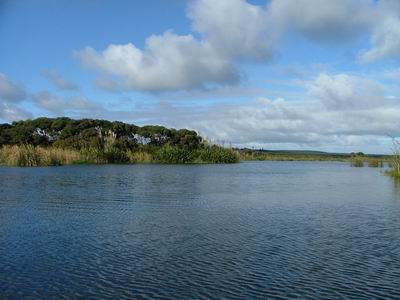Introduction
Northland has a large number of small and generally shallow lakes. The majority of these were formed by dune activity and are therefore called ‘dune lakes'. However, some – such as Lake Ōmāpere – were formed by volcanic activity, or were artificially made.
Northland's lakes are a valuable economic, social, cultural and environmental resource.
 Lake Mokeno on the Poutō Peninsula.
Lake Mokeno on the Poutō Peninsula.
The Northland Lake Water Quality Monitoring Network (LWQMN) was set up by the council in 2005 as a means of collecting information on water quality in the region's lakes, and monitoring change over time.
The programme includes 28 lakes in the Kai Iwi, Aupōuri, central/Karikari and Poutō lake groups. These lakes are sampled every three months to test for a range of properties including temperature, nutrients and water clarity.
